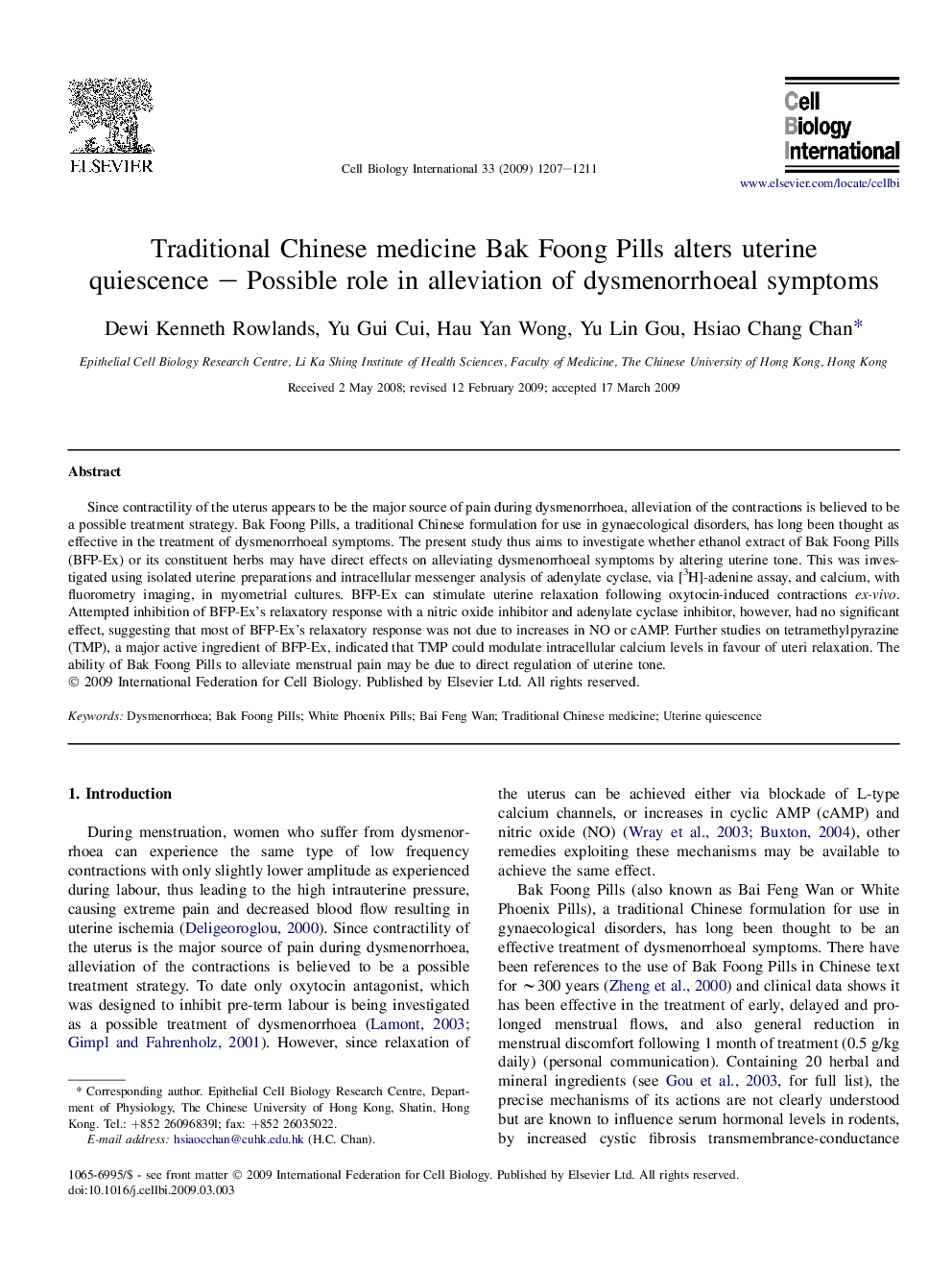| Article ID | Journal | Published Year | Pages | File Type |
|---|---|---|---|---|
| 2067006 | Cell Biology International | 2009 | 5 Pages |
Abstract
Since contractility of the uterus appears to be the major source of pain during dysmenorrhoea, alleviation of the contractions is believed to be a possible treatment strategy. Bak Foong Pills, a traditional Chinese formulation for use in gynaecological disorders, has long been thought as effective in the treatment of dysmenorrhoeal symptoms. The present study thus aims to investigate whether ethanol extract of Bak Foong Pills (BFP-Ex) or its constituent herbs may have direct effects on alleviating dysmenorrhoeal symptoms by altering uterine tone. This was investigated using isolated uterine preparations and intracellular messenger analysis of adenylate cyclase, via [3H]-adenine assay, and calcium, with fluorometry imaging, in myometrial cultures. BFP-Ex can stimulate uterine relaxation following oxytocin-induced contractions ex-vivo. Attempted inhibition of BFP-Ex's relaxatory response with a nitric oxide inhibitor and adenylate cyclase inhibitor, however, had no significant effect, suggesting that most of BFP-Ex's relaxatory response was not due to increases in NO or cAMP. Further studies on tetramethylpyrazine (TMP), a major active ingredient of BFP-Ex, indicated that TMP could modulate intracellular calcium levels in favour of uteri relaxation. The ability of Bak Foong Pills to alleviate menstrual pain may be due to direct regulation of uterine tone.
Related Topics
Life Sciences
Biochemistry, Genetics and Molecular Biology
Biophysics
Authors
Dewi Kenneth Rowlands, Yu Gui Cui, Hau Yan Wong, Yu Lin Gou, Hsiao Chang Chan,
